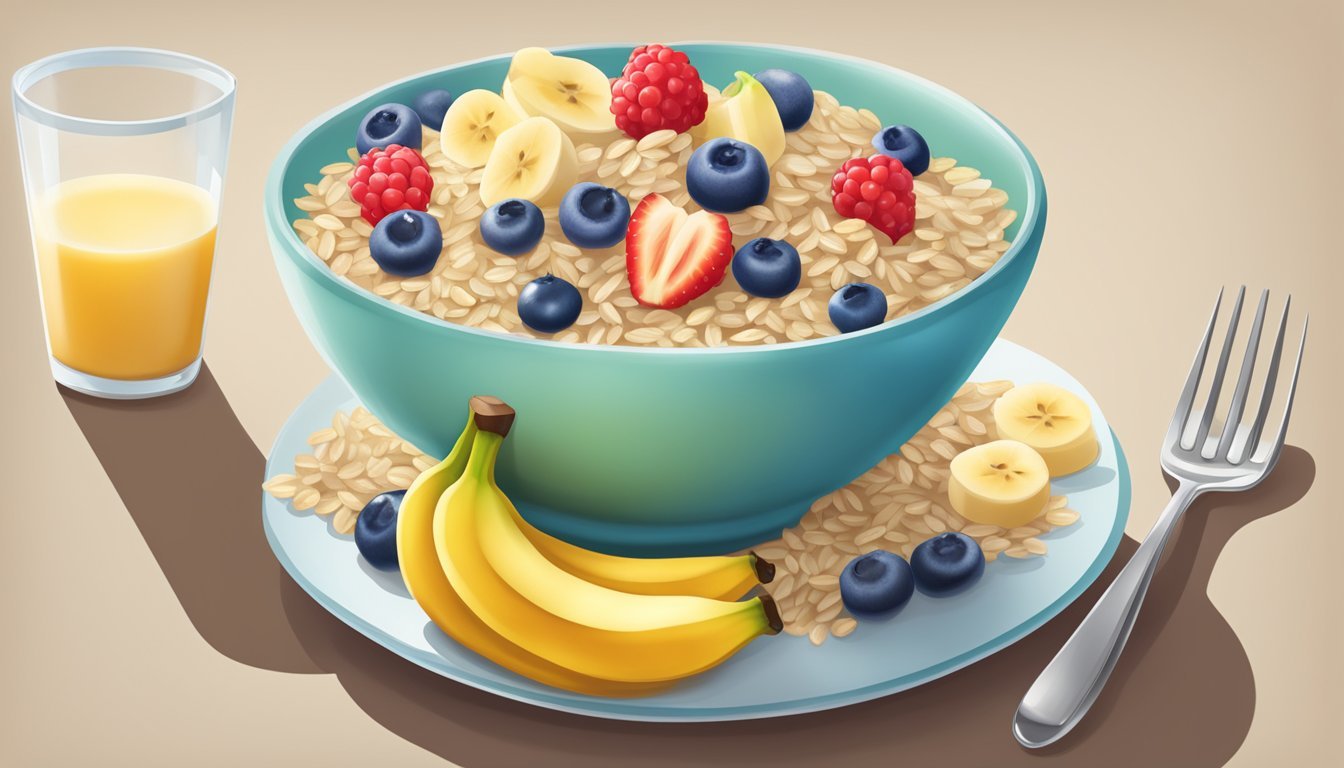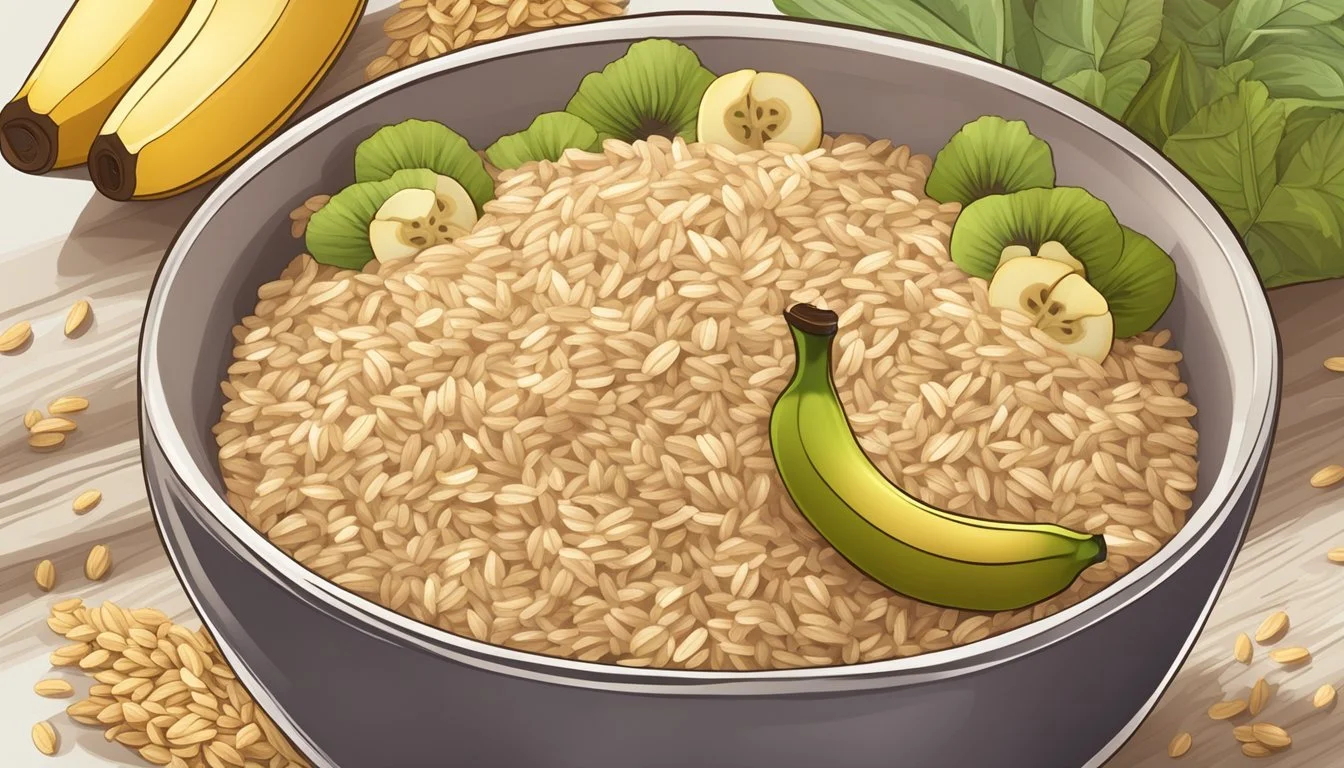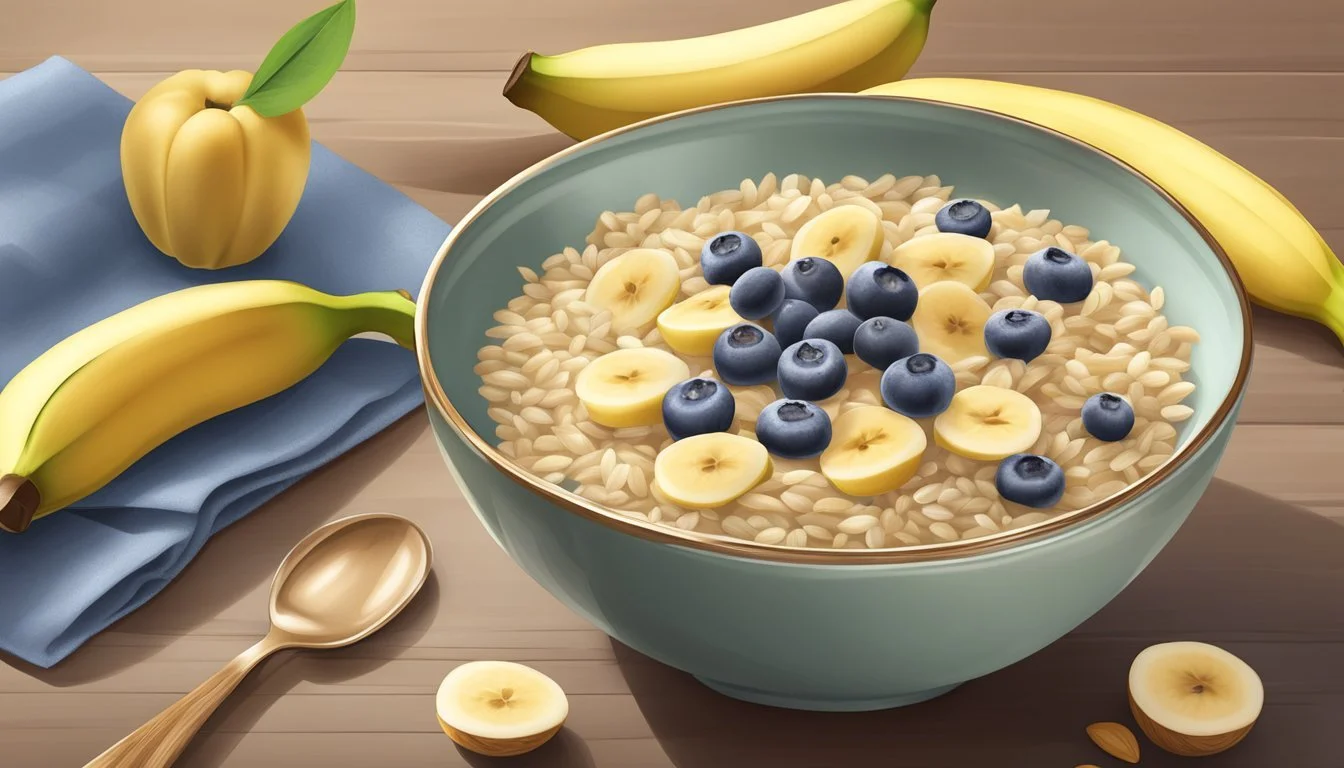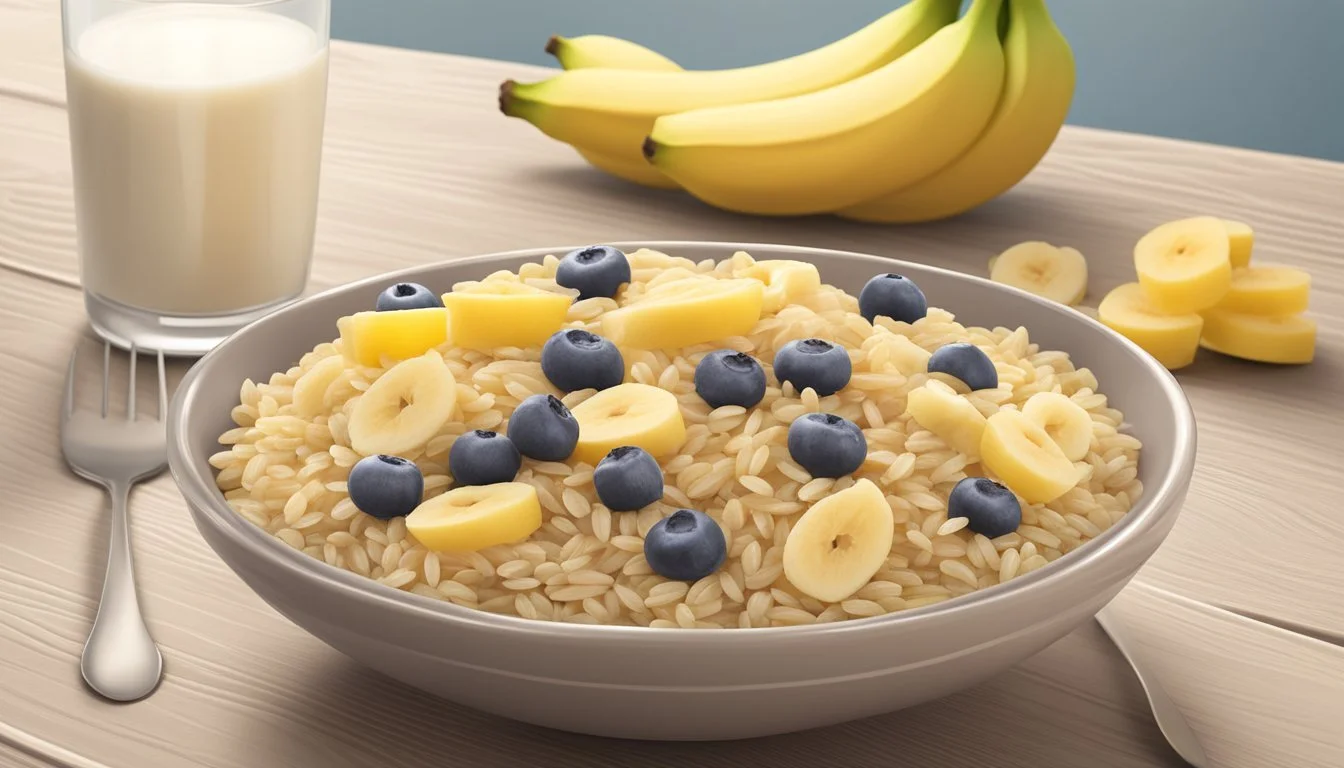Healthy Times Organic Brown Rice Cereal
A Nutrient-Rich Option for Infants
Healthy Times Organic Brown Rice Cereal with Banana offers a nutritious breakfast option for health-conscious consumers. This cereal combines the wholesome goodness of organic brown rice with the natural sweetness of bananas. It provides essential nutrients while catering to those seeking organic and gluten-free alternatives.
Brown rice serves as an excellent base for this cereal, offering a rich source of fiber, vitamins, and minerals. The addition of banana not only enhances the flavor profile but also contributes additional nutritional benefits. This combination creates a well-rounded meal that can support overall health and provide sustained energy throughout the day.
Choosing organic ingredients ensures that the cereal is free from synthetic pesticides and genetically modified organisms. This makes Healthy Times Organic Brown Rice Cereal with Banana an appealing choice for parents looking to introduce solid foods to their infants or for adults seeking a clean, nutritious breakfast option.
Nutritional Overview
Healthy Times Organic Brown Rice Cereal with Banana offers a nutritious blend of whole grain brown rice and banana. This infant cereal provides essential macronutrients, vitamins, and minerals to support healthy growth and development in babies.
Macronutrients
The cereal contains a balanced mix of carbohydrates, protein, and fats. Carbohydrates from brown rice provide energy for active infants. The cereal offers about 4 grams of protein per serving, supporting muscle and tissue development.
Fiber content is moderate, aiding in healthy digestion. The banana adds natural sweetness and additional nutrients. Fat content is low, as the cereal is primarily grain-based.
Calorie content is approximately 60 calories per serving, suitable for infant nutrition needs.
Vitamins and Minerals
This organic cereal is fortified with essential vitamins and minerals. It contains iron, crucial for cognitive development and preventing anemia in infants. Calcium is added to support bone growth.
Zinc is present, aiding immune function. The cereal provides vitamin C, important for collagen production and iron absorption. B vitamins, including thiamin and niacin, support energy metabolism.
The banana component contributes potassium, beneficial for muscle function and growth. Organic certification ensures the nutrients come from high-quality, pesticide-free ingredients.
Health Benefits of Brown Rice Cereal
Brown rice cereal offers numerous health advantages due to its whole grain content and nutritional profile. It can positively impact blood sugar levels and potentially aid in diabetes management.
Whole Grain Advantages
Brown rice cereal retains the bran and germ layers of the grain, providing a rich source of fiber, vitamins, and minerals. These components contribute to improved digestive health and sustained energy release. The cereal contains essential B vitamins like thiamin, niacin, and vitamin B6, which support metabolism and nervous system function.
Brown rice's antioxidants, including phenols and flavonoids, help protect cells from damage. The fiber content promotes feelings of fullness, potentially aiding in weight management efforts. Additionally, the magnesium in brown rice supports bone health and muscle function.
Blood Sugar and Diabetes
The high fiber content of brown rice cereal can help regulate blood sugar levels. This slower digestion and absorption process may benefit individuals with diabetes or those at risk of developing the condition.
Studies suggest that consuming whole grains like brown rice may reduce the risk of type 2 diabetes. The cereal's low glycemic index helps prevent rapid spikes in blood glucose, promoting better long-term blood sugar control.
Brown rice also contains compounds that may improve insulin sensitivity. This property could contribute to more effective glucose metabolism in individuals with or at risk of diabetes.
Organic and Gluten-Free Benefits
Organic brown rice cereal with banana offers numerous advantages for health-conscious consumers. It combines the nutritional benefits of whole grains with the assurance of organic farming practices and gluten-free ingredients.
Understanding Organic Foods
Organic foods are grown without synthetic pesticides or fertilizers. They are produced using natural farming methods that prioritize soil and water conservation. Organic brown rice cereal is free from genetically modified organisms (GMOs) and artificial additives.
Choosing organic can reduce exposure to potentially harmful chemicals. It may also provide higher levels of certain nutrients. Organic farming practices support biodiversity and ecosystem health.
Organic certification ensures strict standards are met throughout production and processing. This gives consumers confidence in the product's quality and environmental impact.
Gluten-Free and Digestive Health
Gluten-free cereals are essential for individuals with celiac disease or gluten sensitivity. Brown rice is naturally gluten-free, making it a safe choice for these consumers.
Gluten-free diets can improve digestive symptoms for sensitive individuals. They may reduce bloating, gas, and abdominal pain. Some people report increased energy and clearer thinking when avoiding gluten.
Rice-based cereals are often fortified with vitamins and minerals. This helps ensure adequate nutrient intake for those on restricted diets. The fiber in brown rice supports digestive health and regular bowel movements.
Gluten-free products have become more diverse and widely available. This makes it easier for people to maintain a balanced diet while avoiding gluten.
Comparison with Other Cereals
Healthy Times Organic Brown Rice Cereal with Banana offers distinct nutritional advantages compared to many conventional cereals. Its whole grain base and natural fruit flavoring set it apart from refined grain options and those with artificial additives.
Whole Grain vs. Refined Grains
Healthy Times cereal uses brown rice, a whole grain, as its primary ingredient. This provides more fiber, vitamins, and minerals than cereals made with refined white rice or other processed grains. Whole grains contain the bran, germ, and endosperm of the grain, preserving nutrient content.
Brown rice cereals typically have a lower glycemic index than those made with refined grains. This means they cause a slower, more gradual rise in blood sugar levels. The extra fiber in whole grains also promotes digestive health and helps maintain feelings of fullness.
Sugar Content and Additives
Many commercial cereals contain high amounts of added sugars, often as the second or third ingredient. Healthy Times Organic Brown Rice Cereal with Banana uses real banana for flavoring, avoiding artificial sweeteners or excess added sugars.
The natural fruit provides sweetness without dramatically increasing the overall sugar content. This makes it a better choice for those looking to limit sugar intake, especially in children's diets.
Organic certification ensures the cereal is free from synthetic pesticides and fertilizers. It also prohibits the use of artificial preservatives, colors, and flavors commonly found in many mainstream cereals.
Understanding Glycemic Index
The glycemic index (GI) is a valuable tool for assessing how quickly foods raise blood sugar levels. It ranks carbohydrates on a scale from 0 to 100 based on their impact on blood glucose.
Foods are classified into three categories:
Low GI: 0-55
Medium GI: 56-69
High GI: 70+
Low GI foods are digested and absorbed more slowly, leading to a gradual rise in blood sugar. This can help with blood sugar control and may contribute to weight management.
Bananas, a common ingredient in organic brown rice cereals, have a GI score of about 50. This places them in the low GI category, making them a suitable option for those monitoring their blood sugar.
Brown rice typically has a lower GI compared to white rice due to its higher fiber content. Dietary fiber slows digestion and absorption of carbohydrates, contributing to better blood sugar control.
When assessing the nutritional value of foods, it's important to consider both the GI and the glycemic load. Glycemic load takes into account the quantity of carbohydrates consumed, providing a more comprehensive picture of a food's impact on blood sugar.
Incorporating low GI foods like brown rice and bananas into one's diet can support stable blood sugar levels and promote overall health. However, portion control remains essential for effective blood sugar management.
Culinary Uses and Pairings
Healthy Times Organic Brown Rice Cereal with Banana offers versatility in the kitchen. This nutritious blend can be incorporated into various dishes and paired with complementary ingredients to create satisfying meals.
Creative Recipe Ideas
Transform the cereal into a hearty breakfast bowl by adding warm milk and a drizzle of honey. For a protein-packed option, mix in Greek yogurt and top with fresh berries. Create no-bake energy balls by combining the cereal with nut butter, honey, and chopped nuts. Use it as a coating for baked chicken tenders or fish fillets for a crispy, gluten-free alternative to breadcrumbs.
Incorporate the cereal into smoothies for added fiber and texture. Blend it with frozen bananas, almond milk, and a spoonful of almond butter for a creamy treat. For a twist on traditional rice pudding, cook the cereal with coconut milk, cinnamon, and diced mango.
Recommended Pairings
Pair the brown rice cereal with sliced almonds or pumpkin seeds for added crunch and healthy fats. Fresh fruits like strawberries, blueberries, or peaches complement the banana flavor. A dollop of almond butter or tahini adds richness and protein. For a savory option, top with avocado slices and a soft-boiled egg.
Sprinkle chia seeds or ground flaxseed for an omega-3 boost. Mix with oatmeal for a multi-grain breakfast. Serve alongside a small handful of walnuts or pecans for heart-healthy fats. For a tropical twist, add shredded coconut and a splash of pineapple juice to the prepared cereal.
Risks and Considerations
While Healthy Times Organic Brown Rice Cereal with Banana offers nutritional benefits, it's important to be aware of potential drawbacks. Moderation and attention to product quality are key considerations.
Moderation in Diet
Incorporating brown rice cereal into a balanced diet is essential. Excessive consumption may lead to an imbalanced nutrient intake. Overconsumption of carbohydrates can contribute to blood sugar spikes, especially in individuals with diabetes or insulin resistance.
Sodium content should be monitored, particularly for those with hypertension or heart conditions. While brown rice is naturally low in sodium, added ingredients or flavoring may increase levels.
Variety in food choices remains crucial for overall health. Relying too heavily on any single food item may result in nutritional gaps.
Potential Contaminants
Arsenic levels in rice products have raised concerns. Brown rice tends to contain higher arsenic concentrations than white rice due to its outer layers.
Long-term exposure to high arsenic levels may increase disease risk, including certain cancers and cardiovascular issues.
Quality control measures by manufacturers are vital to minimize contaminant risks. Certified organic products may have lower pesticide residues but don't guarantee arsenic-free status.
Consumers should consider rotating grain sources and thoroughly rinsing rice before cooking to reduce potential contaminants.
Environmental and Sustainability Factors
Organic brown rice cereal with banana offers several environmental and sustainability benefits. The use of organic farming practices reduces reliance on synthetic pesticides and fertilizers, promoting soil health and biodiversity.
Organic rice cultivation typically uses less water compared to conventional methods, contributing to water conservation efforts. This is particularly important in regions facing water scarcity.
The inclusion of bananas in the cereal adds nutritional value while potentially reducing food waste. Overripe bananas that might otherwise be discarded can be utilized in cereal production.
Sustainable farming practices for both rice and bananas often involve crop rotation and intercropping, which help maintain soil fertility and reduce pest pressures naturally.
Organic certification ensures strict adherence to environmentally friendly farming standards. This includes prohibiting the use of genetically modified organisms (GMOs) and promoting responsible land management.
The production of organic cereals generally has a lower carbon footprint compared to conventional alternatives. This is due to reduced energy inputs and the carbon sequestration potential of organic soils.
Packaging choices for organic cereals can further enhance sustainability. Many brands opt for recyclable or biodegradable materials, minimizing environmental impact throughout the product lifecycle.
Packaging and Label Insights
Healthy Times Organic Brown Rice Cereal with Banana comes in a compact, recyclable box. The packaging features clear labeling with product information and nutritional facts.
The front label prominently displays the product name and organic certification. It also highlights key features like "no added sugar" and "iron-fortified" to inform consumers.
On the back, the nutrition facts panel provides detailed information about the cereal's nutritional value. This includes serving size, calorie count, and nutrient percentages based on daily values.
The ingredients list is typically short, containing organic brown rice and organic banana powder as primary components. Additional vitamins and minerals may be listed for fortification purposes.
Serving size is clearly indicated, usually around 1/4 cup (15g) of dry cereal. This helps parents measure appropriate portions for their infants.
The packaging often includes preparation instructions for mixing the cereal with breast milk, formula, or water. These guidelines ensure proper consistency for different feeding stages.
Storage recommendations are provided to maintain freshness. The box usually advises keeping the cereal in a cool, dry place and using it within a specified timeframe after opening.










